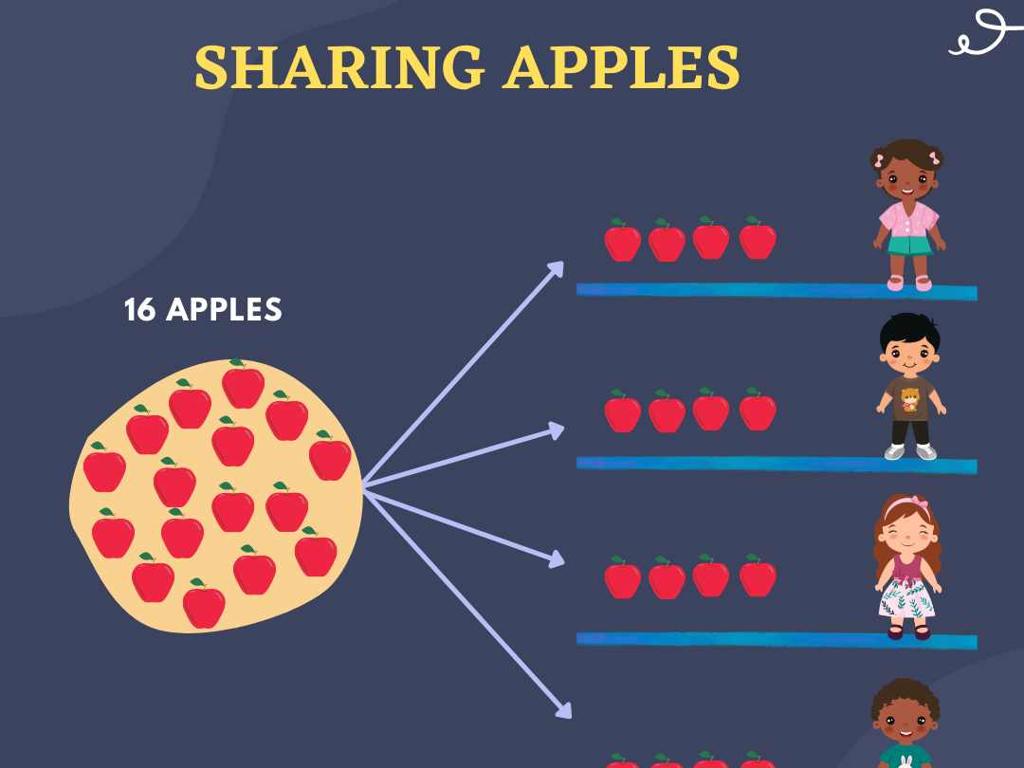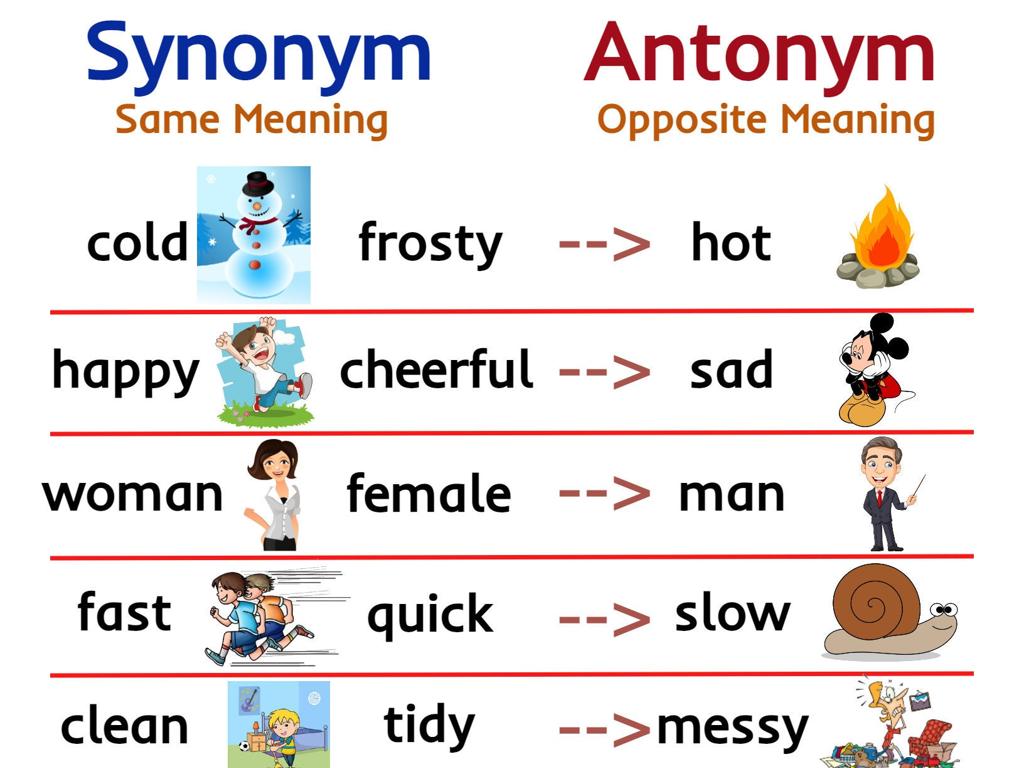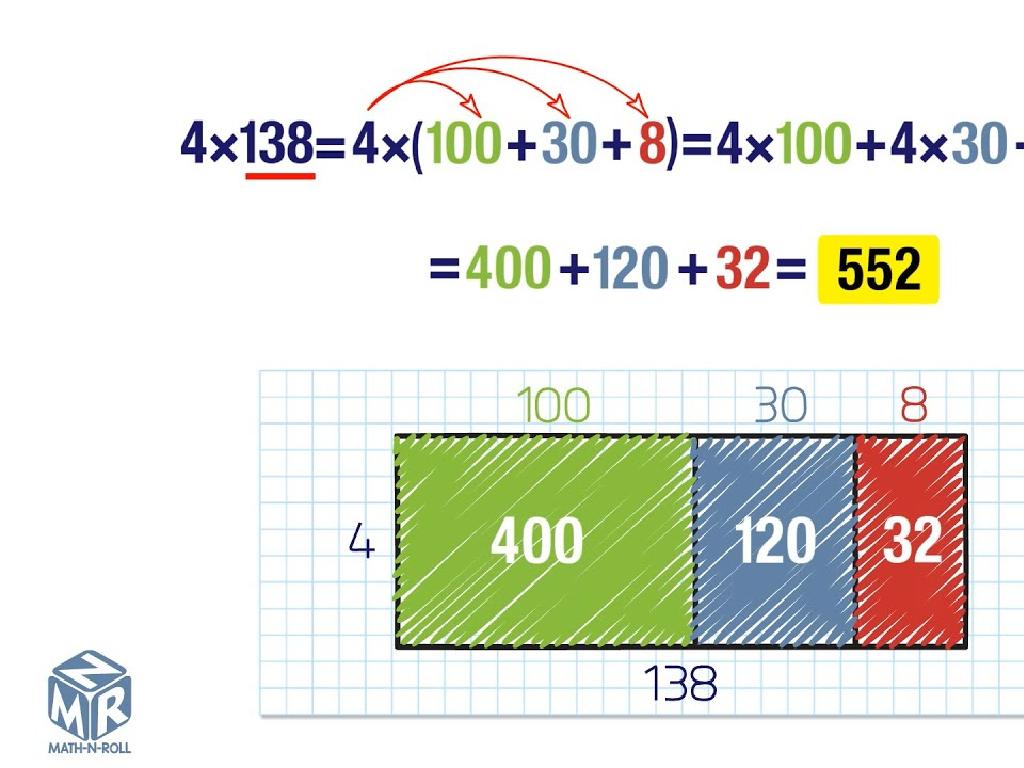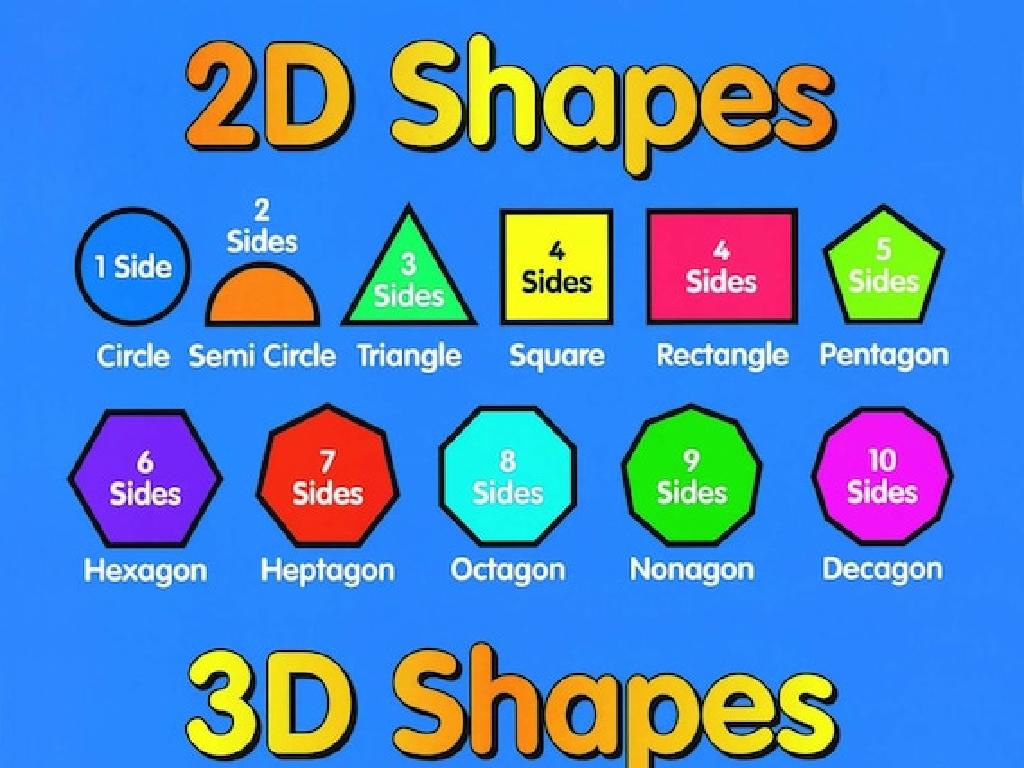Multiply Integers: Find The Sign
Subject: Math
Grade: Sixth grade
Topic: Operations With Integers
Please LOG IN to download the presentation. Access is available to registered users only.
View More Content
Multiplying Integers: Finding the Sign
– Integers in daily life
– Integers represent things like temperature changes, bank balances, and elevations.
– Operations with integers
– Addition, subtraction, multiplication, and division are the key operations.
– Rules for multiplying integers
– Same signs multiply to positive, different signs to negative.
– Practice with examples
– Let’s multiply -2 by 3, and 4 by -5 together.
|
This slide introduces students to the concept of multiplying integers and understanding the rules for determining the sign of the product. Begin by discussing how integers are used in everyday life, such as in financial transactions or measuring temperatures. Explain the basic operations that can be performed with integers. Focus on the multiplication of integers, emphasizing the rule that multiplying two integers with the same sign results in a positive product, while integers with different signs result in a negative product. Provide examples for the class to work through together, such as multiplying -2 by 3, which yields -6, and 4 by -5, which yields -20. Encourage students to think of their own examples and to practice in order to solidify their understanding.
Understanding Integers and Their Signs
– Define integers
– Integers include whole numbers, zero, and negatives
– Positive vs. negative integers
– Positive integers are above zero, negative are below
– Real-world integer examples
– Temperatures, bank balances, elevations
– Multiplying integers
– When multiplying, like signs give a positive, unlike signs give a negative
|
Introduce the concept of integers to students by defining them as whole numbers including zero and negative numbers. Explain the difference between positive and negative integers, using a number line if necessary. Provide relatable examples such as temperatures (above/below zero), bank balances (deposits/withdrawals), and elevations (above/below sea level). When discussing multiplication, emphasize the rule that multiplying two integers with the same sign results in a positive product, while multiplying integers with different signs results in a negative product. Use examples to illustrate this, and prepare to have students practice with exercises in class.
Multiplying Integers: Finding the Sign
– Positive x Positive = Positive
– Positive x Negative = Negative
– Negative x Negative = Positive
– Mnemonics to remember rules
– Use ‘Same Signs Positive, Different Signs Negative’ to recall
|
This slide is aimed at helping sixth-grade students understand the rules for multiplying integers and how to determine the sign of the product. When two positive integers are multiplied, the result is positive. Multiplying a positive integer with a negative one always results in a negative product. Conversely, when two negative integers are multiplied, the outcome is a positive integer. To help students remember these rules, introduce the mnemonic ‘Same Signs Positive, Different Signs Negative.’ Encourage students to practice with examples and to create their own mnemonics to aid memory. Provide additional practice problems where students can apply these rules to reinforce their understanding.
Multiplying Integers: Finding the Sign
– Rules for determining the sign
– Multiply same signs for a positive, different signs for a negative result.
– Practice with varied sign pairs
– Example: (+7) x (-3) = -21, (-8) x (-2) = +16
– Tips to prevent errors
– Remember: ‘Same Same, Positive; Different, Negative’.
– Class activity: Sign hunt
|
This slide introduces the basic rules for finding the sign when multiplying integers. Emphasize that the product of two integers with the same sign is positive, while the product of two integers with different signs is negative. Provide practice examples with different combinations of positive and negative numbers to solidify understanding. Share quick mnemonic tips to help students remember the rules and avoid common mistakes. For the class activity, create a ‘Sign Hunt’ where students multiply different pairs of integers and determine the sign of the product, fostering engagement and reinforcing the concept.
Let’s Practice Multiplying Integers!
– Multiply positive integers
– Example: 6 x 7 = 42
– Multiply a negative by a positive
– Example: -4 x 5 = -20
– Multiply two negative integers
– Example: -3 x -8 = 24
– Group practice session
|
This slide is designed for a class activity to practice multiplying integers and understanding how the sign of the result is determined. Start with simple multiplication of positive numbers to ensure basic understanding. Then, introduce multiplication involving negative numbers, emphasizing that a negative times a positive results in a negative. Next, explain that when two negative numbers are multiplied, the result is positive. For the group practice, encourage class participation by having students work in small groups to solve similar problems and discuss the rules for determining the sign of the product. Provide guidance and support as needed, and consider using manipulatives or visual aids to help students grasp the concept.
Real-World Application: Integer Multiplication
– Apply integer multiplication
– Scenario 1: Temperature changes
– Multiplying temperature changes can predict patterns
– Scenario 2: Elevation levels
– Multiplying integers to find sea level differences
– Analyze sign changes in products
– Understanding how multiplying positives and negatives affects the sign
|
This slide aims to show students how the concept of multiplying integers applies to real-world situations. For temperature changes, if the temperature drops by 2 degrees every hour, what would be the change after 5 hours? (Scenario 1). For elevation, if you go up 3 meters above sea level and then down 4 meters below, what’s the overall change in elevation? (Scenario 2). These scenarios help students understand the practical application of integer multiplication and the importance of the sign in determining the direction of change. Encourage students to think of other examples where multiplying integers with different signs is useful.
Integer Multiplication Game
– Split into teams for a challenge
– Use spinners to generate integers
– Multiply the integers together
– Example: Spinner 1 lands on -3, Spinner 2 lands on 4, multiply -3 x 4
– First to 10 correct sets wins!
|
This interactive class activity is designed to help students practice multiplying integers and understanding the rules for determining the sign of the product. Divide the class into small teams and provide each team with a spinner or dice that have positive and negative integers. Students will take turns spinning to generate pairs of integers which they will then multiply together. Emphasize the rule that multiplying two integers with the same sign results in a positive product, while multiplying integers with different signs results in a negative product. The first team to correctly multiply 10 sets of integers wins the game. This activity encourages teamwork, quick thinking, and reinforces the concept of integer multiplication in a fun and engaging way. Prepare a few sets of spinners with different integer ranges to accommodate varying levels of difficulty within the class.
Wrapping Up: Multiplying Integers
– Review of integer multiplication
– Homework: Integer worksheet
Complete problems on multiplying integers to reinforce today’s lesson.
– Apply skills to real-world scenarios
Use examples like temperature changes or bank transactions.
– Keep practicing for mastery
|
As we conclude today’s lesson on multiplying integers, it’s important to recap the key points to reinforce student understanding. For homework, students are assigned a worksheet that provides additional practice on this topic. Encourage students to apply what they’ve learned to real-world situations, such as calculating temperature changes or understanding bank transactions involving debts and credits. Remind them that practice is essential for mastery, and they should try to find opportunities to use these skills in everyday life. The next class will begin with a discussion of the homework and any questions the students may have.





